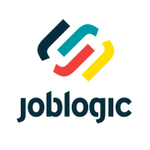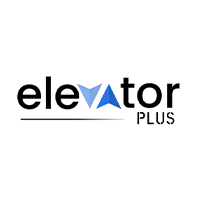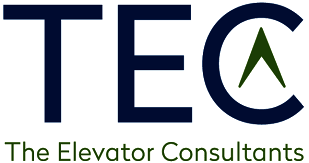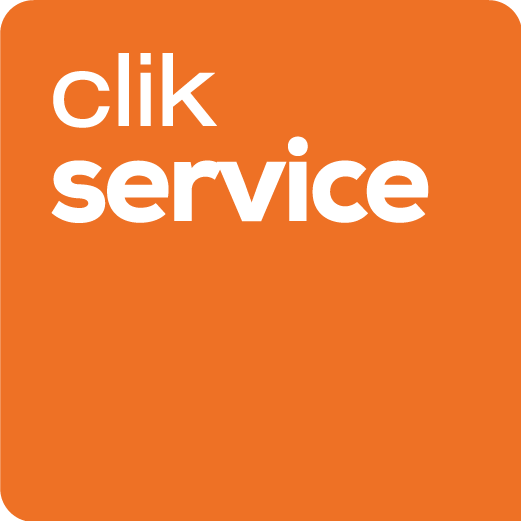What Is Escalator Management Software?
Escalator Management Software (EMS) is a specialist software developed to efficiently manage escalator systems in a variety of settings, including retail malls, airports, train stations, and other major public facilities. It is an essential tool for developing maintenance and operations teams since it provides a consolidated platform for monitoring, tracking, and analyzing escalator performance.
One of the most important characteristics of escalator management software is the capacity to collect real-time data from numerous sensors put on the escalators. This data contains information about the escalators' speed, direction, and usage patterns, as well as any potential problems or malfunctions. This enables maintenance teams to swiftly identify and resolve any issues, leading in decreased downtime and enhanced passenger safety.
Furthermore, EMS provides remote monitoring and control, allowing maintenance crews to access and control the escalators from a single place. This decreases the resources and time required for manual inspection and maintenance, resulting in cost savings for building management. Furthermore, EMS provides extensive analytical tools that leverage collected data to provide reports and insights into escalator performance.
This enables building management to make data-driven decisions, such as optimizing maintenance schedules and discovering improvement opportunities. When selecting escalator management software, one crucial factor to consider is compatibility with the building's existing escalator systems. Some software may be tailored to specific types or brands of escalators, whereas others provide greater flexibility and support for a variety of systems.
What Are The Recent Trends In Escalator Management Software?
In recent years, there has been a tremendous growth in demand for effective and innovative escalator management software. This is owing to the increased use of escalators in various business and public locations, which creates a greater demand for effective maintenance and monitoring. As a result, the industry has seen numerous trends in the development of escalator management software, with the goal of delivering creative solutions to ensure that escalators run smoothly.
One of the most recent trends is the incorporation of artificial intelligence (AI) and the Internet of Things (IoT) into escalator management software. These technologies enable the software to collect real-time data from the escalators, including usage patterns, energy consumption, and maintenance requirements, allowing for predictive and proactive maintenance.
This not only increases the overall efficiency of the escalators, but it also minimizes downtime and maintenance expenses. Another development is the use of cloud-based escalator management software. This enables remote monitoring and administration of escalators, allowing operators and maintenance crews to access data and complete tasks from anywhere with an internet connection.
This not only boosts flexibility and convenience, but it also decreases the need for on-site visits, saving both time and resources. Furthermore, increased data analytics capabilities have emerged as a key trend in escalator management software. This enables the study of enormous volumes of data received from escalators, discovering patterns and trends, making more educated decisions, and forecasting possible breakdowns.
As a result, maintenance may be completed on time and efficiently, decreasing downtime and enhancing the escalator's overall performance. Furthermore, the use of mobile applications in escalator management software has increased. These apps enable maintenance professionals to receive real-time notifications, consult manuals and schematics, and log maintenance jobs on their mobile devices, thereby improving productivity and communication.
Last but not least, there has been a strong emphasis on improving the user interface and experience of escalator management software. The software's user-friendly and intuitive design allows operators and maintenance people to quickly navigate and use it, resulting in better escalator management and maintenance.
Benefits Of Using Escalator Management Software
Escalator management software is an essential tool for commercial and public buildings with escalators. This software is specifically intended to optimize and regulate escalator operations, making it easier to operate and maintain these complicated systems. Investing in reputable escalator management software provides numerous advantages that can improve the overall efficiency, safety, and performance of your escalators. In this buyer's guide, we'll go over the top benefits of employing escalator management software, so you can make an informed decision for your facility.
1. Centralized Operate And Monitoring: One of the primary advantages of employing escalator management software is the ability to operate and monitor multiple escalators from a single place. This eliminates the need for staff to visit each escalator for maintenance, inspection, or control, saving both time and resources. This software allows you to simply access real-time data, create bespoke schedules, and make adjustments to improve the functioning of your escalators.
2. Increased Safety: Every building owner or manager prioritizes safety. Escalator management software has advanced safety features including emergency stop buttons, handrail speed sensors, and step edge sensors to assist prevent accidents and injuries. These features ensure that your escalators run smoothly and safely, providing piece of mind for both building owners and users.
3. Predictive Maintenance: Maintaining escalators can be time-consuming and costly. Escalator management software enables you to arrange maintenance and repairs ahead of time using real-time data and predictive analytics. This helps to spot possible problems and reduce downtime, lowering maintenance costs and extending the life of your escalators.
4. Energy Efficiency: Another key advantage of employing escalator management software is its energy-saving capability. This software allows you to adjust the pace, direction, and lighting of your escalators, lowering energy consumption and electricity expenditures. Furthermore, it may provide energy reports and monitor energy consumption, providing insights and chances for additional energy reduction.
5. Customized Reporting And Analytics: Escalator management software provides complete reporting and analytics capabilities, giving you vital insights into your escalators' performance and usage. This information can help you find patterns, detect abnormalities, and make informed decisions for maximum efficiency. You may also configure reports and receive notifications for certain situations, making it easier to track and manage your escalators.
Important Factors To Consider While Purchasing Escalator Management Software?
When it comes to choosing escalator management software, there are several crucial elements to consider to ensure that you choose the greatest choice for your individual requirements and budget. Here are some important aspects to keep in mind when considering and comparing various options:
1. Functionality And Features: The software's functionality and features are the first and most important considerations. These are the main components that influence the software's overall efficacy and usefulness. Look for features like real-time monitoring, maintenance scheduling, and remote control capabilities to help your escalator operations run more smoothly and reliably.
2. Scalability: As your company develops and evolves, so will your requirements for controlling escalators. As a result, it is critical to choose software that is scalable and can meet your future requirements. This will spare you the trouble of switching to a new software in the future.
3. User-Friendly Interface: Even non-technical users should find the software's interface intuitive and easy to use. This will help you save time and money on training and support. A cluttered and unclear interface will result in annoyance and inefficiency.
4. Compatibility: Ensure that the software is compatible with the operating system and hardware you are currently using on your escalators. It is also critical to determine whether the software is compatible with any existing systems in place, such as maintenance management systems.
5. Customization: Every organization has different demands and requirements, and your escalator management software should be able to meet them. Look for software that has adjustable features and workflows, so you can tailor it to your individual requirements.
6. Data Security: Escalator management software handles sensitive data pertaining to your business operations. As a result, it is critical to purchase software with strong security mechanisms in place to protect your data from cyber threats and breaches.
7. Customer Assistance: Technical troubles and malfunctions can arise with any software, so select a company that provides dependable customer assistance. Look for a provider that offers prompt and responsive support, preferably 24 hours a day, seven days a week, to minimize disruptions to your operations.
8. Cost: Of course, the budget is an important consideration when making a software purchase. However, it is critical to achieve a balance between cost and utility. Paying a little more for software with more complex features and better support may end up saving you more money in the end.
What Are The Key Features To Look For In Escalator Management Software?
When selecting Escalator Management Software, every buyer should examine a few crucial aspects. These features can help your escalator operations run more efficiently, safely, and cost-effectively. Here are the key things to look for in Escalator Management Software:
1. Real-Time Monitoring: A decent Escalator Management Software should enable real-time monitoring of your escalators. This allows you to monitor their status, identify prospective problems, and take proactive steps to prevent breakdowns.
2. Remote Access: Make sure the program supports remote access, which allows you to monitor and operate your escalators from anywhere. This is especially beneficial if your team works from multiple locations or remotely.
3. Maintenance Scheduling And Tracking: Look for software that has maintenance scheduling and tracking functionality. This enables you to schedule routine maintenance chores, track their progress, and keep track of all maintenance actions for each escalator.
4. Dashboard And Reporting: A dashboard that displays key performance indicators and generates reports will help you monitor your escalator's performance and spot patterns or areas for improvement.
5. Alarm system: Implementing an alarm system that warns you of any faults or malfunctions in real time can significantly save response time and prevent costly breakdowns.
6. History Data Storage: Look for software that can save history data from your escalator operations. This can aid in long-term planning and detecting trends or patterns that may warrant attention.
7. Integration With CMMS: To ensure efficient operations, make sure the program is compatible with your present Computerized Maintenance Management System (CMMS).
8. User-Friendly Interface: Your maintenance crew will need a user-friendly interface with straightforward navigation and simple functionality to operate the software effectively.
9. Customization Options: Because each escalator system is unique, ensure that the software provides for customization so that the features are tailored to your exact requirements.
10. Technical Support And Updates: Finally, make sure that the software has trustworthy technical assistance and regular upgrades to keep up with industry standards and technological improvements. By taking these essential aspects into account, you can select the Escalator Management Software that best meets your needs and allows you to manage your escalator operations smoothly.
Why Do Businesses Need Escalator Management Software?
Businesses require escalator management software to effectively control and monitor their escalators, assuring smooth operations and peak performance. This program is intended to streamline many activities, such as scheduling maintenance, tracking usage, and recognizing possible problems, all in a single centralized platform. Escalator management software can help organizations improve the overall safety and reliability of their escalators while also lowering downtime and maintenance expenses.
One of the primary advantages of adopting escalator management software is the ability to schedule and track maintenance work. Escalators require regular maintenance to function properly, and keeping track of when maintenance is necessary can be a difficult undertaking. Escalator management software automates this procedure, ensuring that maintenance chores are completed on time and lowering the likelihood of unexpected breakdowns.
This not only keeps the escalators running smoothly, but also helps to extend their life. Furthermore, escalator management software provides real-time monitoring capabilities, allowing businesses to watch the functioning of their escalators and identify any concerns. This allows businesses to take preemptive steps to fix any issues, reducing the likelihood of escalator breakdowns and ensuring their customers' safety.
Furthermore, the software can create thorough statistics and analytics, allowing businesses to make more educated decisions on escalator maintenance and operations. Another benefit of employing escalator management software is the ability to optimise escalator utilization. Businesses can improve efficiency by studying escalator usage patterns at peak hours.
This can result in shorter wait times for customers and higher overall customer satisfaction. In today's fast-paced corporate environment, time is of the importance, and escalator management software saves organizations both time and effort. The software has a user-friendly interface that allows you to control several escalators from one location. This eliminates the need for human record-keeping and tracking, allowing organizations to focus on more critical duties.
How Much Time Is Required To Implement Escalator Management Software?
Implementing escalator management software can significantly increase the efficiency and safety of your escalator system. However, the amount of time necessary for implementation varies depending on a number of factors, including the complexity of your system, the size of your facility, and the software's special features and customization. Implementing escalator management software can take anything from a few weeks to a few months.
This includes initial setup, staff training, and integration with your current procedures. It is crucial to remember that the actual implementation time will vary depending on your individual demands and requirements. To guarantee a seamless and timely deployment, it is advised that you collaborate closely with the software vendor and thoroughly organize the process.
This includes comprehending the software's specific features and functionalities, establishing clear goals and objectives, and allocating adequate time for staff training and system testing. During the implementation phase, you should also examine any potential disruptions to your daily operations. Your chosen software provider should have a clear strategy in place to reduce downtime and ensure a smooth transition to the new system.
What Is The Level Of Customization Available In Escalator Management Software?
Escalator management software provides varying levels of flexibility to meet the specific needs of different enterprises and industries. From basic configuration options to extensive customization features, these software solutions offer a variety of tools for managing and monitoring escalators. The user interface is one of the most adjustable features of escalator management software.
Users can select between a simple, simplified UI and a more thorough dashboard with various analytics and reporting widgets. This enables a tailored experience based on the user's tastes and needs. In addition, several software vendors include customization possibilities for maintenance and inspection plans. Businesses can create their own maintenance schedules, assign jobs to individual technicians, and monitor progress in real time.
This not only increases productivity, but also allows for better escalator maintenance management, which is critical for guaranteeing safety and minimizing downtime. Furthermore, escalator management software enables for the customisation of warnings and notifications. Users can specify the type and frequency of alerts they receive, such as maintenance reminders or emergency messages for malfunctions or safety concerns.
This amount of flexibility ensures that organizations can keep track of escalator maintenance and respond quickly to any difficulties. Another key feature of escalator management software modification is its capacity to interact with various systems and technologies.
This includes connecting to building management systems, remote monitoring systems, and even AI-powered predictive maintenance solutions. Businesses that integrate with these technologies can benefit from a comprehensive and personalized solution for managing escalators and increasing productivity.
Which Industries Can Benefit The Most From Escalator Management Software?
Escalator Management Software is a valuable tool for any industry that uses escalators to transfer people and commodities throughout its facilities. However, certain sectors may benefit more from this software due to their unique needs and processes. Let us look at some of the industries that can benefit the most from Escalator Management Software.
1. Shopping Centers And Malls: Because shopping centers and malls are vast commercial locations with several escalators, Escalator Management Software can be extremely beneficial. This program enables managers to closely monitor the performance of escalators and take proactive steps to avoid breakdowns. It also allows them to monitor escalator usage and detect peak hours, which helps them better deploy resources and control crowd flow.
2. Airports: With a steady stream of visitors, airports require dependable and efficient escalator management. Escalator Management Software can help ensure smooth operations by giving real-time data on escalator performance, detecting and notifying maintenance issues, and tracking escalator traffic. It can also assist airport workers in managing crowd flow and implementing crowd control measures during peak seasons.
3. Office Buildings: In large office buildings with several levels, escalators are essential modes of movement. Escalator Management Software can assist building managers in keeping track of escalator maintenance schedules, detecting difficulties quickly, and monitoring usage patterns. This allows them to improve escalator efficiency and dependability while also optimizing resource utilization.
4. Hospitals: Escalators must function properly in order for patients and medical equipment to move smoothly. Escalator Management Software can assist in the timely maintenance and repair of escalators, ensuring uninterrupted operations. It can also help manage the large number of visitors at peak hours and in emergencies.
5. Stadiums And Convention Centers: Events and gatherings at stadiums and convention centers frequently draw large crowds, putting a strain on the facilities' escalators. Escalator Management Software can assist venue managers in closely monitoring escalator operation, identifying potential faults, and taking preventative measures to avoid interruptions. This improves the visiting experience while reducing the chance of mishaps.
Conclusion
Finally, selecting the appropriate escalator management software is critical for ensuring that your building's escalators run efficiently and effectively. As shown in this buyer's guide, there are various things to consider, including the software's functionality, compatibility with existing systems, and price. It is critical to conduct extensive study and analyze many possibilities to locate the one that best meets your personal requirements and budget.
Furthermore, investing in a dependable and comprehensive escalator management software might benefit your company in the long run. By streamlining maintenance and tracking data, you can improve safety, reduce downtime, and extend the life of your escalators. It also provides the convenience of remote management, allowing real-time information and control over several escalators at simultaneously.
Finally, selecting the appropriate escalator management software can save your company time and money while improving the entire client experience. We hope this buyer's guide has provided you with useful information and considerations for making an informed selection. With so many options available on the market, take the time to properly research and select the finest software for your building's escalators.











